
Back
Amesiodendron chinense (Merrill) Hu
| Family Name: | Sapindaceae |
| Synonyms: | Amesiodendron tienlinense, Amesiodendron integrifoliolatum, Paranephelium chinense |
| Common Name: | 细子龙 |
Amesiodendron chinense, commonly known as the Chenille Plant, is a tree that can grow up to 25 meters tall with a dense crown. Its young leaves emerge in shades of yellow or pink before gradually maturing to green.
Name
Classifications and Characteristics
| Plant Division | Angiosperms (Flowering Seed Plants) (Dicotyledon) |
|---|---|
| Plant Growth Form | Tree (Medium (16m-30m), Small (6m-15m)) |
| Lifespan (in Singapore) | Perennial |
| Mode of Nutrition | Autotrophic |
| Plant Shape | Rounded, Weeping / Pendulous |
| Maximum Height | 5 m to 25 m |
Biogeography
| Native Distribution | China, Myanmar, Thailand, Vietnam, Malaysia, Indonesia (Sumatra) |
|---|---|
| Native Habitat | Terrestrial (Primary Rainforest, Monsoon Forest) |
| Preferred Climate Zone | Tropical |
Description and Ethnobotany
| Growth Form | Small to medium-sized tree, up to 25m height. Crown densely rounded, with pendulous branches. |
|---|---|
| Foliage | Mature leaves green, pinnately-compound; individual leaflets narrowly elliptical with slight bilateral asymmetry, with prominent veins and wavy-serrate margins. Young leaves emerge glossy red, aging to pinkish-orange, then green. |
| Flowers | Species is monoecious, with separate male and female flowers on same tree. Flowers unisexual, white, hairy on margins and bottom surface, produced at tips of branches in densely hairy inflorescences from May to July in native habitat. |
| Fruit | Globose schizocarp, coarse shells mature to brown or black, densely covered by small pale brown lenticels, produced from August to November, containing 2cm wide seeds. |
| Habitat | Primary rainforest tree, native to valleys, hill forests and limestone areas, 300-1000m altitude. |
| Cultivation | Regenerates well. Tolerates alkaline soils, as well as acidic soils with pH as low as 4.5. Propagate by stem cuttings or seeds. |
| Etymology | Genus epithet 'Amesiodendron' named after American botanist-orchidologist Oakes Ames (1874-1950), who was professor of economic botany at Havard University. Species epithet 'chinense' means 'Chinese', referring to its natural distribution in China. |
| Ethnobotanical Uses | Others: Strong dense wood used in furniture-making. Categorized as near threatened by IUCN due to over-exploitation of valuable timber in certain regions. |
Landscaping Features
| Desirable Plant Features | Ornamental Foliage |
|---|---|
| Landscape Uses | Container Planting, Suitable for Roadsides, Swimming Poolside, Shade Providing Tree / Palm |
| Thematic Landscaping | Water Garden, Naturalistic Garden |
| Plant & Rootzone Preference or Tolerance Remarks | pH 4.5 - 6.0. Also found naturally in limestone areas in China. |
Plant Care and Propagation
| Light Preference | Full Sun |
|---|---|
| Water Preference | Moderate Water |
| Plant Growth Rate | Moderate |
| Rootzone Tolerance | Fertile Loamy Soils, Well-Drained Soils, Acidic (low pH) Soils, Alkaline high pH Soils |
| Maintenance Requirements | Moderate |
| Propagation Method | Seed, Stem Cutting |
Foliar
| Foliage Retention | Evergreen |
|---|---|
| Mature Foliage Colour(s) | Green |
| Mature Foliage Texture(s) | Smooth, Glossy / Shiny, Thin |
| Foliar Type | Compound (Odd-Pinnate) |
| Foliar Arrangement Along Stem | Opposite |
| Foliar Shape(s) | Non-Palm Foliage (Elliptical) |
| Foliar Venation | Pinnate / Net |
| Foliar Margin | Entire - Wavy / Undulate, Serrate / Toothed |
| Foliar Apex - Tip | Cuspidate |
| Foliar Base | Acute |
| Typical Foliar Area | Notophyll ( 20.25cm2 - 45 cm2 ) |
| Leaf Area Index (LAI) for Green Plot Ratio | 4.0 (Tree - Dense Canopy) |
| Prominent Young Flush Colour(s) Remarks | Red-pink-orange |
Non - Foliar and Storage
| Trunk Type (Non Palm) | Woody |
|---|---|
| Bark Colour(s) | Greenish to orange brown |
| Mature Bark Texture | Cracked |
| Stem Type & Modification | Woody |
| Root Type | Underground (Tap Root, Fibrous Root) |
Floral (Angiosperm)
| Flower & Plant Sexuality | Unisexual Flowers , Monoecious |
| Flower Colour(s) | White |
|---|
| Flowering Habit | Polycarpic |
Fruit, Seed and Spore
| Mature Fruit Colour(s) | Black, Brown |
|---|---|
| Fruit Classification | Simple Fruit |
| Fruit Type | Indehiscent Dry Fruit , Schizocarp |
Image Repository
Others
| Master ID | 1414 |
|---|---|
| Species ID | 2707 |
| Flora Disclaimer | The information in this website has been compiled from reliable sources, such as reference works on medicinal plants. It is not a substitute for medical advice or treatment and NParks does not purport to provide any medical advice. Readers should always consult his/her physician before using or consuming a plant for medicinal purposes. |

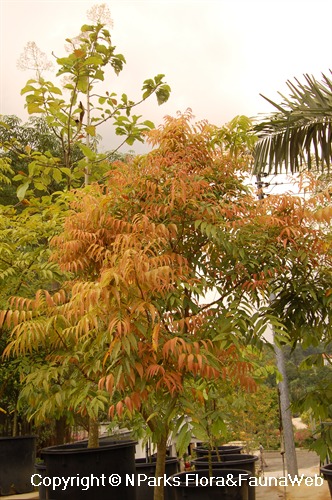

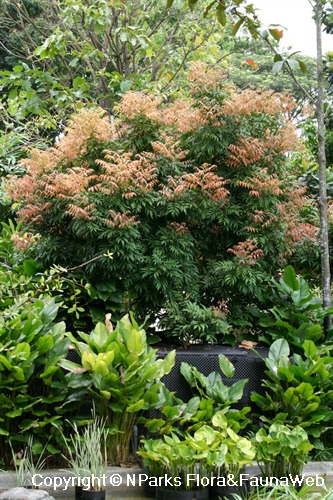

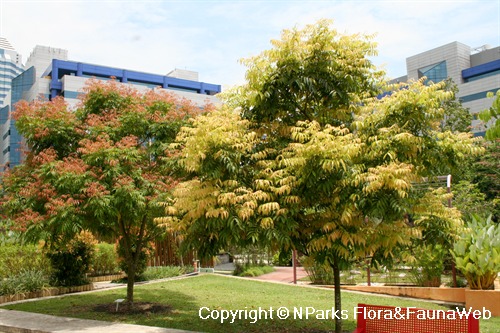


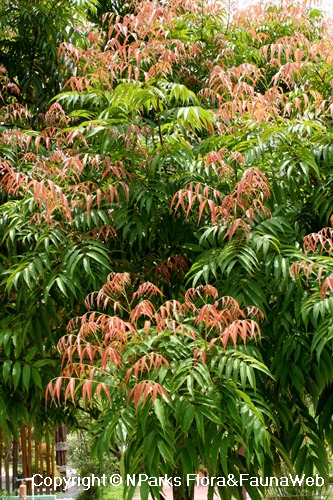

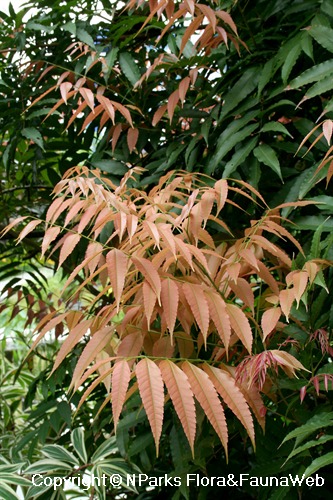
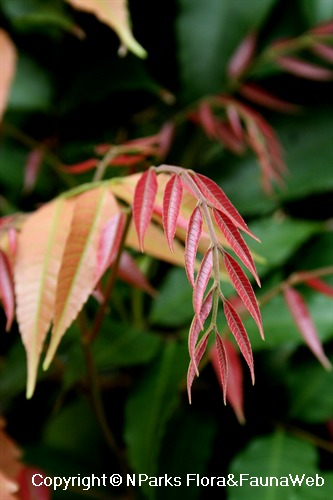
.jpg)
.jpg)
.jpg)
.jpg)